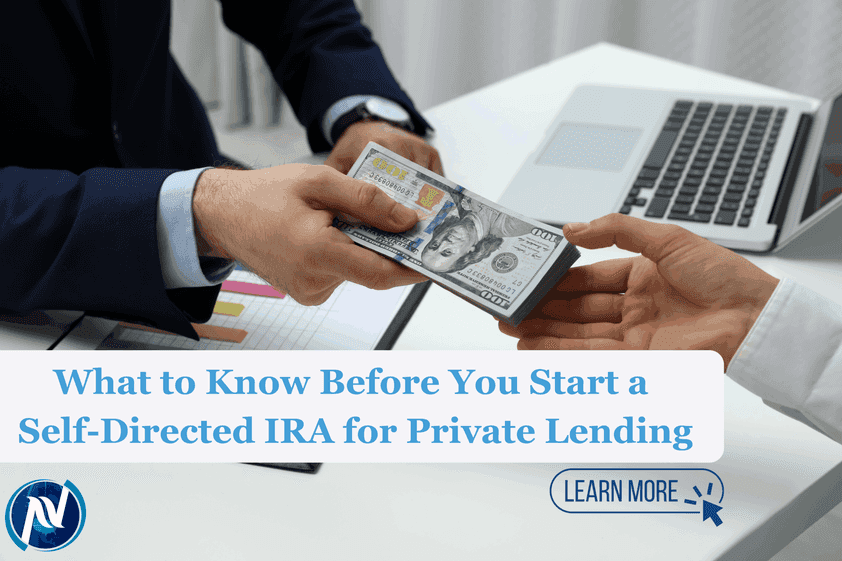What to Know Before You Start a Self-Directed IRA for Private Lending
Private lending might sound like something reserved for banks or big investors. But with a Self-Directed IRA, you can step into that role yourself—using retirement funds to make secured loans to others. Done right, it can generate steady, predictable income while keeping your money backed by real assets. Still, it’s not as simple as cutting …

Private lending might sound like something reserved for banks or big investors. But with a Self-Directed IRA, you can step into that role yourself—using retirement funds to make secured loans to others. Done right, it can generate steady, predictable income while keeping your money backed by real assets. Still, it’s not as simple as cutting a check. There are a few key things to understand before you start.
Why Investors Turn to Private Lending In a Self-Directed IRA
Honestly, it depends on who you’re asking. Some people like the control that comes with lending. Instead of watching the market swing, you decide who borrows, how much, and at what rate. The interest payments go back into your IRA, tax-deferred or tax-free depending on your account type. For many investors, that steady return—often secured by real estate—is the main draw here.
With a Self-Directed IRA, you can lend to individuals, LLCs, or even businesses, as long as they’re not “disqualified persons” under IRS rules. That means no loans to yourself, your spouse, or close family members. It’s one of those fine-print rules worth understanding before you put money on the table.
Setting Up a Private Loan the Right Way
Every loan made through your Self-Directed IRA must be documented properly. That means a written promissory note, clear repayment terms, and ideally, collateral to back it up. Many investors choose real estate as security, but it can be other valuable property as long as the paperwork supports it. The IRA itself—not you personally—must hold the lien or mortgage.
Because your retirement account technically owns the asset, all payments must go directly back into the IRA. You can’t collect interest personally or mix funds with non-IRA money. That separation is what keeps your investment compliant and your tax advantages intact.
That’s also why most experienced investors take their time before jumping in. Private lending rewards preparation. You’ll want to think through things like repayment timelines, interest rates, and what happens if a borrower misses a payment. Some investors prefer shorter notes to keep their capital moving. Others might want longer terms with higher returns. Either way, clear documentation and realistic expectations are key. Private loans can be powerful wealth builders inside a Self-Directed IRA, but only when you treat them with the same diligence and patience you’d expect from a traditional lender.
What to Watch Out For
The biggest mistake new private lenders make is skipping due diligence. You’re acting as the bank, which means you have to think like one—verify the borrower’s credibility, confirm the collateral’s value, and make sure the terms make sense. A custodian or administrator can help handle the paperwork, but you’re ultimately responsible for understanding the deal.
Also remember that liquidity can be limited. If you lock your funds into a multi-year note, that money isn’t available for other opportunities until the borrower pays it back. Balancing private loans with other, more accessible assets can help keep your portfolio flexible.
A Thoughtful Start Goes a Long Way
Private lending through a Self-Directed IRA can be a smart way to create reliable, asset-backed income within your retirement plan. But it’s best approached with patience and care—just like any loan you’d offer out of pocket. Take the time to understand the rules, work with experienced professionals, and make sure every document lines up correctly. When you’re ready to explore private lending opportunities inside your IRA, talk with the experts at American IRA at 866-7500-IRA and find out what your next steps can be.
Get 15 minutes of free expert advice.
If you're not sure whether a self-directed IRA is right for you, schedule a 15-minute call with our industry veteran team. We'll explain the possibilities, help you evaluate your options, and answer all your questions - no pressure, no obligations.
